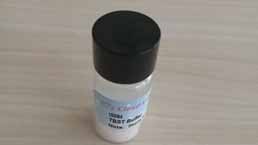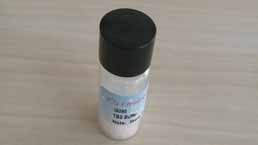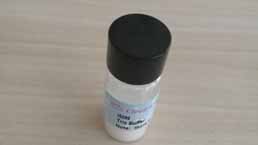Active Complement Component 3a (C3a) 

Overview
Properties
- Product No.APA387Hu01
- Organism SpeciesHomo sapiens (Human) Same name, Different species.
- ApplicationsCell culture; Activity Assays.
Research use only - DownloadInstruction Manual
- CategoryInfection immunityImmune moleculeAutoimmunity
- Buffer FormulationPBS, pH7.4, containing 0.01% SKL, 5% Trehalose.
- Traits Freeze-dried powder, Purity > 95%
- Isoelectric Point8.2
Sign into your account
Share a new citation as an author
Upload your experimental result
Review

Contact us
Please fill in the blank.
Activity test

Complement Component 3a (C3a) is a component of the complement system, this protein is also known as the C3a anaphylatoxin, modulates inflammation and possesses antimicrobial activity. It's been identified that C3A can interact with Complement Factor I (CFI), thus a functional binding ELISA assay was conducted to detect the interaction of recombinant human C3a and recombinant human CFI. Briefly, C3a was diluted serially in PBS with 0.01% BSA (pH 7.4). Duplicate samples of 100 μl were then transferred to CFI-coated microtiter wells and incubated for 1h at 37℃. Wells were washed with PBST and incubated for 1h with anti-C3a pAb, then aspirated and washed 3 times. After incubation with HRP labelled secondary antibody for 1h at 37℃, wells were aspirated and washed 5 times. With the addition of substrate solution, wells were incubated 15-25 minutes at 37℃. Finally, add 50 µL stop solution to the wells and read at 450/630 nm immediately. The binding activity of recombinant human C3a and recombinant human CFI was shown in Figure 1, the EC50 for this effect is 0.03 ug/mL.
Usage
Reconstitute in 10mM PBS (pH7.4) to a concentration of 0.1-1.0 mg/mL. Do not vortex.
Storage
Avoid repeated freeze/thaw cycles. Store at 2-8°C for one month. Aliquot and store at -80°C for 12 months.
Stability
The thermal stability is described by the loss rate. The loss rate was determined by accelerated thermal degradation test, that is, incubate the protein at 37°C for 48h, and no obvious degradation and precipitation were observed. The loss rate is less than 5% within the expiration date under appropriate storage condition.
Increment services
Citations
- Immobilization of soluble complement receptor 1 on islets.ScienceDirect: S0142961211002596
- Elevated complement factor C5a in maternal and umbilical cord plasma in preeclampsiaPubMed: 23415845
- Efficacy of a synthetic antimicrobial peptidomimetic versus vancomycin in a Staphylococcus epidermidis device-related murine peritonitis modelPubmed: 23645587
- Therapeutic effects of sesame oil on monosodium urate crystal-induced acute inflammatory response in ratsPubmed: 24353977
- Complement Split Products C3a/C5a and Receptors: Are They Regulated by Circulating Angiotensin II Type 1 Receptor Autoantibody in Severe Preeclampsia?PubMed: 26485247
- Human IgG Antinuclear Antibodies Induce Pregnancy Loss in Mice by Increasing Immune Complex Deposition in Placental Tissue: In Vivo StudyPubMed: 26388133
- Acute and prolonged complement activation in the central nervous system during herpes simplex encephalitisPubmed:27235358
- Alternative Pathway Inhibition by Exogenous Factor H Fails to Attenuate Inflammation and Vascular Leakage in Experimental Pneumococcal Sepsis in MicePubmed:26872035
- Dosagem de frações ativadas do sistema complemento em empiema induzido em ratos10183
- Interaction of gold and silver nanoparticles with human plasma: Analysis of protein corona reveals specific binding patterns.pubmed:28131092
- Accuracy of complement activation product levels to detect infected pleural effusion in ratspubmed:28474458
- The Complement C3a–C3aR Axis Promotes Development of Thoracic Aortic Dissection via Regulation of MMP2 ExpressionPubmed:29367209
- Long term safety and immunological effects of a nanobiotherapeutic, bovine poly-[hemoglobin-catalase-superoxide dismutase-carbonic anhydrase], after four weekly …Pubmed:29873524
- Mesenchymal stromal cell secretory factors induce sustained improvements in islet function pre-and post-transplantationDoi: 10.1016/j.jcyt.2018.07.007
- Intrathecal complement activation by the classical pathway in tick-borne encephalitisPubmed: 30850976
- Pathogenic roles of anti-C1q antibodies in recurrent pregnancy loss
- Hemocompatibility of biodegradable Zn-0.8 wt%(Cu, Mn, Li) alloys
- Complement-mediated hypersensitivity reactions to an amphotericin B-containing lipid complex (Abelcet) in pediatric patients and anesthetized rats: Benefits of slow infusion33549818
- Increased ratios of complement factors C3a to C3 in aqueous humor and serum mark glaucoma progression33493474
- C‐reactive protein inhibits C3a/C3aR‐dependent podocyte autophagy in favor of diabetic kidney diseasePubmed:35503088


















